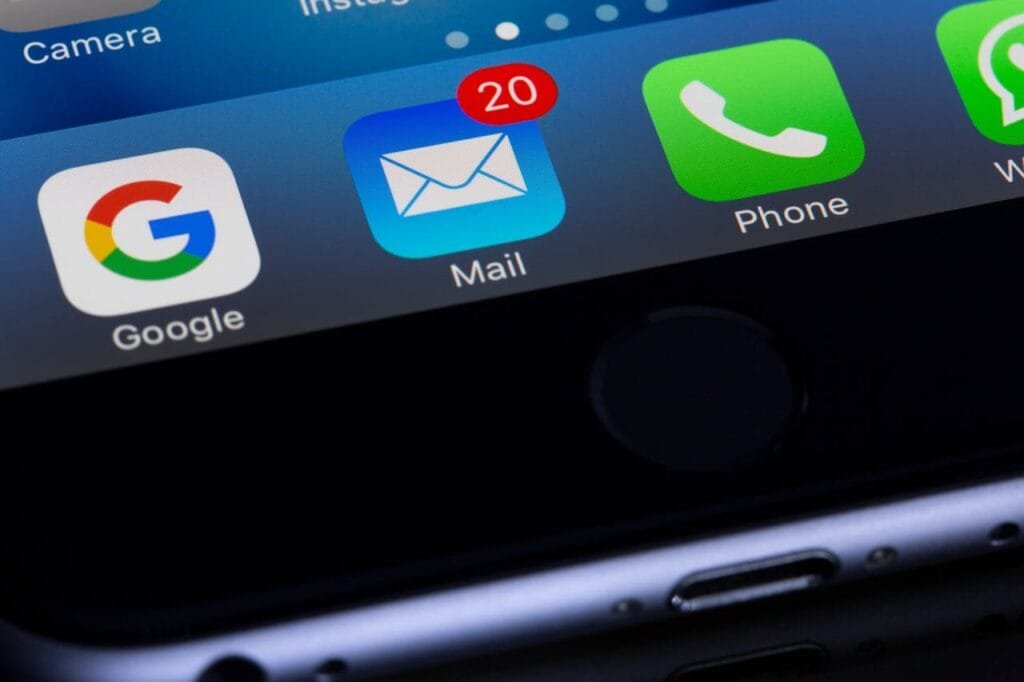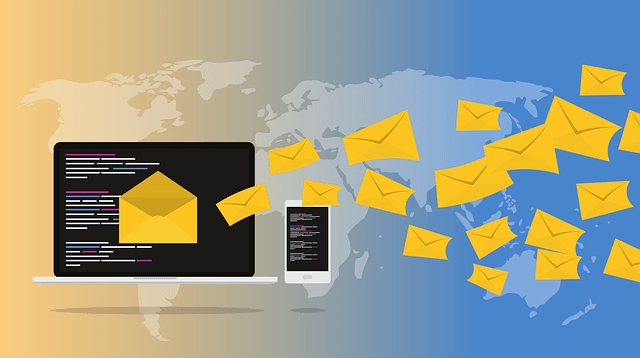In today’s world, email marketing remains one of the most effective ways to reach customers and drive engagement. But with increased access to personal data comes a serious responsibility: protecting customer privacy. Customers are more aware than ever of how their information is used, and privacy regulations like GDPR and CCPA are in place to ensure companies handle data with care. For CEOs and marketers, safeguarding customer data isn’t just a legal requirement—it’s an essential part of building trust and ensuring long-term loyalty.
In this guide, we’ll explore best practices for keeping customer data secure in email marketing campaigns. From data encryption to consent management, these steps will help you create a privacy-first email strategy that’s both compliant and effective.
Why Data Security Matters in Email Marketing
Customer data is the backbone of personalized and impactful email marketing. With it, brands can segment audiences, tailor messages, and track campaign performance. However, this data also contains sensitive information that can be vulnerable if not handled properly. Compromised customer data not only damages trust but can lead to financial losses and regulatory penalties.
Key reasons why data security is critical in email marketing:
- Building Customer Trust: Customers are more likely to engage if they feel their data is handled responsibly.
- Legal Compliance: Privacy regulations require businesses to protect personal data and respect customer preferences.
- Reputation Management: A data breach can harm brand reputation, leading to lost customers and damaged credibility.
Securing customer data is essential for running effective, trustworthy email campaigns. Now, let’s dive into the strategies that will help you keep data secure from start to finish.
Step 1: Collect Data Responsibly and Only as Needed
Before sending emails, you need customer data—but not more than necessary. Collecting only the essential data reduces your risk and shows customers that you respect their privacy.
Ask for Relevant Information Only
When collecting data for email marketing, keep it simple. If you’re collecting information for a newsletter, an email address and name might be all you need. Avoid requesting sensitive information, such as personal identification numbers or payment details, unless absolutely necessary for a specific campaign.
For instance, if you’re running a loyalty program, collect information directly related to program goals, like purchase frequency or product preferences, rather than extensive demographic data. By limiting data collection, you reduce risk and make customers feel safer sharing their information.
Implement Clear Consent Mechanisms
Use explicit opt-in forms to ensure that customers understand what they’re agreeing to. Clearly explain why you’re collecting their information and how it will be used. For example, “We’ll use your email to send personalized offers and updates. You can unsubscribe anytime.”
A well-worded consent message reassures customers that their data will be used transparently and respectfully, setting a solid foundation for future interactions.
Step 2: Use Secure Email Marketing Platforms

Choosing a secure email marketing platform is essential for protecting customer data. A reputable platform provides built-in security features that help safeguard data through every stage of your campaign.
Choose a Platform with Strong Security Standards
Look for email marketing platforms that comply with privacy standards like GDPR and CCPA. Features like data encryption, secure storage, and regular security audits are essential for keeping data safe. Platforms that offer data processing agreements (DPAs) are even better, as these contracts outline data protection responsibilities.
For example, platforms like Mailchimp and HubSpot offer GDPR-compliant features, including secure data storage, encryption, and options to manage customer consent. Ensure your chosen platform aligns with your security needs to build a solid data foundation.
Activate Two-Factor Authentication (2FA)
Two-factor authentication adds an extra layer of security by requiring users to verify their identity before accessing the platform. This reduces the risk of unauthorized access to customer data. When setting up 2FA, you’ll typically use a code sent to a mobile device or generated by an authentication app.
Encourage all team members with access to the email platform to use 2FA. This way, even if passwords are compromised, attackers will find it challenging to access sensitive customer data.
Step 3: Protect Data During Storage and Transmission
Once customer data is in your system, safeguarding it requires secure storage and transmission. Data encryption and access controls are essential to prevent unauthorized access.
Encrypt Data at Rest and In Transit
Encryption transforms data into unreadable code that can only be accessed with the correct decryption key, adding an essential layer of protection. Apply encryption to both “data at rest” (stored data) and “data in transit” (data sent over networks).
For example, when sending an email with customer data, make sure the data is encrypted in transit. Similarly, stored data like email lists should also be encrypted, so it’s protected even if someone gains unauthorized access to your servers.
Limit Access Through Role-Based Permissions
Not every team member needs access to customer data. Implement role-based access controls to ensure only authorized personnel can access sensitive information. For example, your analytics team may need access to campaign performance metrics but not to individual customer details.
Regularly review who has access to customer data and adjust permissions as needed. This approach minimizes the risk of internal data breaches and ensures that only those who genuinely need access can reach sensitive information.
Step 4: Use Consent-Based Personalization in Emails

Personalization is powerful, but it requires customer data. To protect privacy, personalization should always be based on customer consent. Consent-based personalization enhances customer trust and ensures compliance with privacy laws.
Request Consent for Data-Driven Personalization
If you’re using data like purchase history or location to tailor emails, explicitly ask for consent. For example, add an option in your sign-up form asking, “Would you like to receive personalized offers based on your past purchases?” This gives customers a clear choice, and only those who opt-in will receive personalized messages.
Not only does this respect customer autonomy, but it also helps you avoid using data without permission, reducing the risk of compliance issues.
Allow Customers to Update Personalization Preferences
Customers’ preferences change over time, and so should your data practices. Give customers the option to adjust personalization settings or opt out if they prefer. A “Manage Preferences” link in your emails or on your website allows customers to change their data-sharing preferences anytime.
For example, provide options to receive emails based on purchase history, product interests, or no personalization at all. This empowers customers to control their data, strengthening their trust in your brand.
Step 5: Regularly Audit Data and Delete Unnecessary Information
Data retention without purpose can be a liability. Regular audits and data cleanup help ensure you’re only storing data that’s relevant, reducing risks and making it easier to manage.
Conduct Routine Data Audits
A data audit involves reviewing stored information to ensure accuracy and relevance. For example, if you have inactive contacts who haven’t engaged with your emails for a year, consider removing them from your list. This cleanup reduces your exposure and improves your email performance metrics.
Schedule audits quarterly or biannually, checking for outdated information or contacts who no longer interact with your emails. By focusing on active, engaged customers, you enhance both security and campaign effectiveness.
Implement a Data Retention and Deletion Policy
Set clear guidelines for how long you’ll retain customer data and when it should be deleted. For example, keep inactive customer data for up to 12 months, then securely delete it if the customer doesn’t re-engage. This policy not only aligns with GDPR and other privacy regulations but also keeps your database clean.
Automate data deletion where possible, so it’s easier to stay compliant without manual intervention. This approach reduces unnecessary data retention and keeps you focused on relevant, timely information.

Related: Check out our free tools:

Step 6: Provide Transparent Opt-Out Options
Respecting customer preferences is key to building trust. A transparent opt-out process allows customers to unsubscribe or adjust their preferences easily, reducing the risk of complaints or disengagement.
Include an Easy-to-Find Unsubscribe Link
Every email should include a clearly visible “unsubscribe” link, typically in the footer. Avoid hiding this link or making it hard to find, as this can frustrate customers and lead to negative perceptions of your brand. When a customer clicks “unsubscribe,” honor their request promptly and stop sending them emails.
For example, use simple language like “Unsubscribe from all emails” to make the process straightforward. Clear unsubscribe options make customers feel respected and help you avoid issues with spam complaints.
Offer Preference Management Options
Beyond unsubscribing, let customers adjust their email frequency or select specific types of emails they want to receive. For example, some may prefer to receive only product updates, while others may want all promotional offers. A preference management page allows them to customize their experience instead of opting out entirely.
Offering these options reduces the likelihood of complete disengagement and shows customers that you value their communication preferences.
Step 7: Educate Your Team on Data Security Best Practices

Even the best tools and policies won’t protect customer data if your team isn’t on the same page. Regular training on data security best practices ensures that everyone understands their role in protecting customer information.
Conduct Regular Security Training
Train your team on basic data security principles, including phishing awareness, secure password practices, and the importance of data encryption. For example, teach employees to recognize phishing emails, as these are a common way attackers gain unauthorized access to marketing platforms.
Incorporate security training into your onboarding process, and provide refresher sessions for existing employees at least once a year. This consistent training keeps security top-of-mind for everyone who handles customer data.
Establish Clear Data Handling Procedures
Outline specific steps for handling customer data, such as how to access the email platform securely, what to do in case of a suspected breach, and the importance of role-based access. By providing clear guidelines, you minimize the risk of accidental errors that could expose sensitive information.
For example, create a simple “Data Security Guide” with step-by-step instructions on accessing, sharing, and storing data securely. Clear procedures make it easier for team members to follow best practices and protect customer data consistently.
Step 8: Regularly Review and Update Your Privacy Policy
A well-maintained privacy policy is essential for keeping customers informed about how their data is used. Regular reviews help ensure that your policy reflects current practices and complies with any new regulations.
Update Your Privacy Policy to Reflect Changes
If you introduce new data collection methods or use customer data in a new way, update your privacy policy accordingly. For instance, if you begin using customer data for AI-driven personalization, include details about this process in your policy. Transparency keeps customers informed and helps avoid potential complaints or misunderstandings.
Notify Customers of Significant Policy Changes
When you make major changes to your privacy policy, inform customers via email or a website notification. This proactive approach shows respect for their privacy and reinforces your commitment to transparency.
For example, send an email with a summary of key changes and a link to the updated policy. Notifying customers of changes builds trust and gives them an opportunity to review your practices.
Step 9: Implement Robust Incident Response Plans for Data Breaches

Even with strong safeguards, data breaches can still occur. Having a well-prepared incident response plan ensures that your team can respond quickly, minimizing damage and protecting customer trust. A solid response plan doesn’t just contain the breach; it also communicates transparently with affected customers, demonstrating your brand’s commitment to their security.
Develop a Step-by-Step Breach Response Plan
Your incident response plan should outline specific steps to take in the event of a breach, including identifying the breach, containing it, notifying affected customers, and rectifying the issue. Define roles and responsibilities within your team so that each member knows their part in managing a breach.
For example, your response plan might specify that IT is responsible for containing the breach and investigating its source, while marketing or customer service teams handle external communications. Clear delegation helps your team respond effectively under pressure, minimizing the impact on customer trust.
Inform Customers Promptly and Transparently
If a breach does occur, let affected customers know quickly and provide them with details on what happened, what information may have been compromised, and what steps you’re taking to protect them. Transparency during a breach builds credibility and reassures customers that you’re handling the situation responsibly.
For instance, send an email to affected customers outlining the nature of the breach, measures you’ve taken to contain it, and any steps customers can take, like changing their passwords. This proactive communication shows respect for customer privacy and reinforces your commitment to safeguarding their data.
Step 10: Foster a Culture of Data Privacy Within Your Organization
Creating a privacy-first email marketing strategy requires more than policies and technology; it requires a culture where data privacy is a shared value. When every team member understands the importance of data security, it becomes a part of your brand’s DNA, enhancing consistency in handling customer information responsibly.
Make Data Privacy a Core Value
Incorporate data privacy into your company’s mission and values. When data privacy is a central tenet, team members are more likely to prioritize it in their daily work. Reinforce that protecting customer data is just as important as achieving marketing goals or hitting sales targets.
For instance, highlight data privacy as a priority during team meetings, emphasizing how secure data practices contribute to building trust with customers. This approach keeps privacy top-of-mind and motivates employees to handle data carefully.
Encourage Ongoing Learning and Privacy Awareness
The digital landscape is continually changing, and so are data privacy threats. Encourage your team to stay informed about the latest privacy practices, emerging threats, and regulatory changes. Host workshops, bring in guest speakers, or provide access to online courses focused on data security.
For example, host a quarterly privacy training session where team members can learn about new regulations or security best practices. By keeping the team engaged and informed, you strengthen your brand’s ability to handle customer data securely and responsibly.
Embracing Data Security as a Competitive Advantage in Email Marketing
Incorporating robust data security practices into your email marketing is about more than just compliance; it’s a powerful differentiator in a crowded marketplace. Brands that can guarantee data security and privacy are more likely to earn customer trust, which is a foundation for long-term loyalty. With privacy concerns top-of-mind for many consumers, data security can become a unique selling point for your brand, helping you stand out as a responsible and forward-thinking company.
Highlight Your Commitment to Data Security in Customer Communication
When you proactively communicate your data protection measures, you show customers that their security is your priority. Use customer touchpoints, such as welcome emails or website privacy pages, to explain how you protect their data in simple, non-technical language. Emphasize your commitment to secure practices, such as encryption and limited access, and reassure customers that their information is always treated with the utmost care.
For instance, a welcome email might include a line like, “We use industry-leading security practices to protect your personal data, so you can enjoy a personalized experience without worry.” Highlighting your commitment to privacy turns data security from a background task into a visible aspect of your brand’s value proposition.
Use Privacy Certification Badges as Trust Signals
If your business adheres to recognized privacy standards, display certification badges on your website and in emails. Certifications like GDPR compliance or ISO 27001 aren’t just technical qualifications—they’re trust signals that communicate your dedication to data privacy. These badges are especially impactful on opt-in forms, account sign-up pages, or email footers, where customers may need reassurance about data security.
For example, a GDPR compliance badge near your subscription form can reassure EU customers that their data will be handled according to strict European standards. Certifications and badges serve as visual cues, reinforcing your brand’s commitment to privacy without needing to say a word.
Conclusion
In the evolving landscape of digital marketing, prioritizing data security in email campaigns is essential. It’s no longer just about complying with regulations; it’s about earning and keeping customer trust. By implementing a privacy-first approach, you’re not only protecting sensitive information but also building a brand that values transparency, responsibility, and respect for customer privacy.
As we’ve explored, safeguarding customer data in email marketing requires intentional practices—from collecting minimal data and choosing secure platforms to empowering customers with control and educating your team. When data security becomes an integral part of your email strategy, you foster deeper connections, inspire loyalty, and strengthen your brand’s reputation as a trustworthy and forward-thinking leader.
In today’s world, customers choose brands they can trust. By treating data security as a core commitment, you position your brand to stand out, adapt to future privacy demands, and grow sustainably. This isn’t just smart marketing—it’s the foundation of long-lasting, genuine customer relationships built on trust.
READ NEXT:
- Are Vanity Metrics Killing Your Marketing Efficiency? Here’s What to Track Instead
- Pinpointing Digital Marketing ROI: Why Your Metrics Aren’t Telling the Full Story
- Unlocking Real ROI in Digital Marketing: The Hidden Costs Draining Your Budget
- How Misaligned Marketing Funnels Are Blocking Your ROI Potential
- Best Digital Marketing Agency In Santa Ana, California
- Best Digital Marketing Agency In San Francisco, California





















